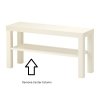Hi folks,
As I mentioned, here's the follow-up thread for Q&A or any other discussion if you're interested in pressing that red button. Thanks wonglp & Simon for the invitation and opportunity to share a bit about a basic introduction to video for still photographers. Thanks to spidey89 for the tech/PA suport. Thanks too to everyone who dropped by, hope everyone managed to get something useful from the session.
There's only that much we could skim through in an hour, hope it provided enough information for you to start your own exploration. I wish I could have shown more examples, but video examples take too much time to shoot sometimes. Plus there's usually something already on youtube.
Like I mentioned, I don't consider myself an expert. I'm still learning new stuff all the time. Still have lots to learn about audio/light for example. So it's good we have a resource like CS, where we can learn from each other. Hope the more experienced video folks here can chime in to answer your questions that are beyond me.
Let's see how things go. If some of the questions are more complex are require a separate thread, we can pull them out into their own thread for better discussion.
As I mentioned, here's the follow-up thread for Q&A or any other discussion if you're interested in pressing that red button. Thanks wonglp & Simon for the invitation and opportunity to share a bit about a basic introduction to video for still photographers. Thanks to spidey89 for the tech/PA suport. Thanks too to everyone who dropped by, hope everyone managed to get something useful from the session.
There's only that much we could skim through in an hour, hope it provided enough information for you to start your own exploration. I wish I could have shown more examples, but video examples take too much time to shoot sometimes. Plus there's usually something already on youtube.
Like I mentioned, I don't consider myself an expert. I'm still learning new stuff all the time. Still have lots to learn about audio/light for example. So it's good we have a resource like CS, where we can learn from each other. Hope the more experienced video folks here can chime in to answer your questions that are beyond me.
Let's see how things go. If some of the questions are more complex are require a separate thread, we can pull them out into their own thread for better discussion.
Last edited:






